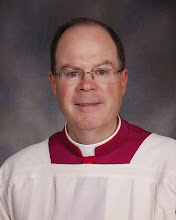
The other day a good friend asked me which door to the Church I use. My answer, of course, was the front door. I don’t even have a key to the back door.
“Oh, I didn’t mean the doors of the building,” he said. “ I meant which door to the Church itself... the duty door or the joy door?”
He had been thinking about his life of faith, and had figured out that a sense of duty rather than deep joy was the main driving force. When I thought over his question, I decided that the door I use most of the time—or the door God had opened for me—was the joy door.
Let’s get something clear from the start: there’s nothing wrong with the duty door. My friend is a marvelous Catholic, and I really admire his dedication to the faith and all he does for the Church and his family. But when we talked it over, we both had to admit that the joy door is really the better of the two.
Which door did the wise men take to Christ? The poet T.S. Eliot seems pretty sure it must have been the duty door. His Christmas poem Journey of the Magi doesn’t make their trip sound too joyful:
‘A cold coming we had of it,
Just the worst time of the year
For a journey, and such a long journey:
The ways deep and the weather sharp,
The very dead of winter.’
…
And the cities hostile and the towns
unfriendly
And the villages dirty and charging high
prices:
A hard time we had of it.
…
With the voices singing in our ears, saying
That this was all folly.
Fortunately, we have more than a poem to tell us the story. Our Gospel today shows the ‘joy door’ thrown wide open for the wise men at Bethlehem; in fact, St. Matthew tells us “they were overwhelmed with joy.”
This shouldn’t surprise us, because it’s just what Isaiah prophesied many centuries before. The Lord’s dawning not only draws nations and kings to Him, it makes them radiant; it thrills and brings rejoicing. Nothing less than overwhelming joy could have fulfilled the prophetic promise.
The Magi may have arrived in obedience, but they depart in delight. They entered by the duty door but they leave by the door of abiding joy.
On this great feast of Epiphany, let’s ask ourselves “Which is my door to Christ?” The door of dutiful obedience symbolized by the Sunday obligation, which gets us to Mass when we’d rather be sleeping in? Or the door of joyful worship, that fills our hearts with energy as we head to church?
As I’ve said, there’s nothing wrong with the duty door. It represents important values like discipline and perseverance. But the glory the Lord revealed to the nations at his coming, the glory that abides in His Church today—is joy itself.
“Rejoice in the Lord always,” St. Paul writes, “Again I say rejoice!” The apostle is emphatic. To meet Jesus is to know deep and lasting joy—not so much a feeling or a sense of pleasure as a basic disposition. (The New Dictionary of Christian Spirituality, 577).
Christian joy isn’t based on what happened to us today; it’s based on what happened at Bethlehem for all time. And as I said a few weeks ago, such joy doesn’t depend on good fortune but on faith that Christ has come in to the world.
Isaiah invites us to lift up our eyes and look around so that we might truly see. Today’s feast is the perfect time to take stock—look at the manger, focus on the altar, that we might really see what’s happened for us and continues to happen. The light that’s shone, symbolized by the star at Bethlehem, can make listless Christians radiant. The kings paid homage with symbolic gifts so that we might pay homage with joyful hearts.
If it’s been just a dutiful Christmas, let’s ask the Lord to open wide the door of joy for us: today, and every day of the year ahead. Once opened, it’s a door that no discouragement or difficulty can close.
[The icon is by Steve Knight, art teacher at our school; it graces the cover of this week's bulletin.]

Monsignor, a great homily - even better, though, is to see this radiance emanating from you, which it clearly does.
ReplyDeleteMsgr Gregory
ReplyDeleteThis is a truly inspirational and beautiful post. Thank you so very much. Also, Steve Knight is quite the artist. That is a beautiful icon so thank you for posting that too. God bless you.